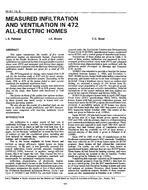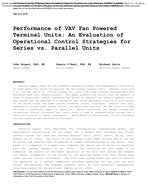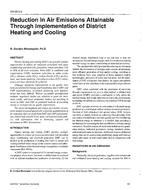Traditionally there are two approaches to thermal comfort studies in the indoor environment. The first approach is to conduct tests in fully controlled climate chambers located in laboratories which help in maintaining desired environmental conditions for the experiments. However, the thermal physics of climate chambers are very different to that of real buildings. Additionally, the numbers of participants in such studies are also limited. The alternate/second approach is to place sensors and collect data in a set of homes and offices over a period of time where researchers have virtually no control on the thermal environment. This approach does involve a large set of participants however the large variations in thermal environmental parameters make the data not very reliable to elucidate trends. This paper reports on an original approach that combines the advantages of both these methods.
In this research thermal comfort studies were conducted in a test house representative of a real residential building and a large set of participants. The thermal environmental parameters and heating strategies inside the test house were also fully controlled by researchers. The aim was to assess the performance of Fanger’s thermal comfort model (PMV) in predicting the actual thermal comfort of occupants (AMV) during heating season using two different types of heating emitters. A total of 119 participants between the ages of 19 and 21 years took part in these experiments. AMV of the occupants was determined by conducting surveys whilst PMV was calculated using sensors installed in the living room. Thermal neutral temperatures were calculated and compared for both AMV and PMV indices. It was found that there is a strong and directly proportional relation of both AMV and PMV with the operative temperature in the room. It was also observed that PMV would typically overestimate the neutral temperature compared to the statistically derived neutral temperature which the occupants would consider thermally comfortable.
Citation: 2017 Winter Conference, Las Vegas, NV, Conference Papers
Product Details
- Published:
- 2017
- Number of Pages:
- 8
- Units of Measure:
- Dual
- File Size:
- 1 file , 1.4 MB
- Product Code(s):
- D-LV-17-C021


